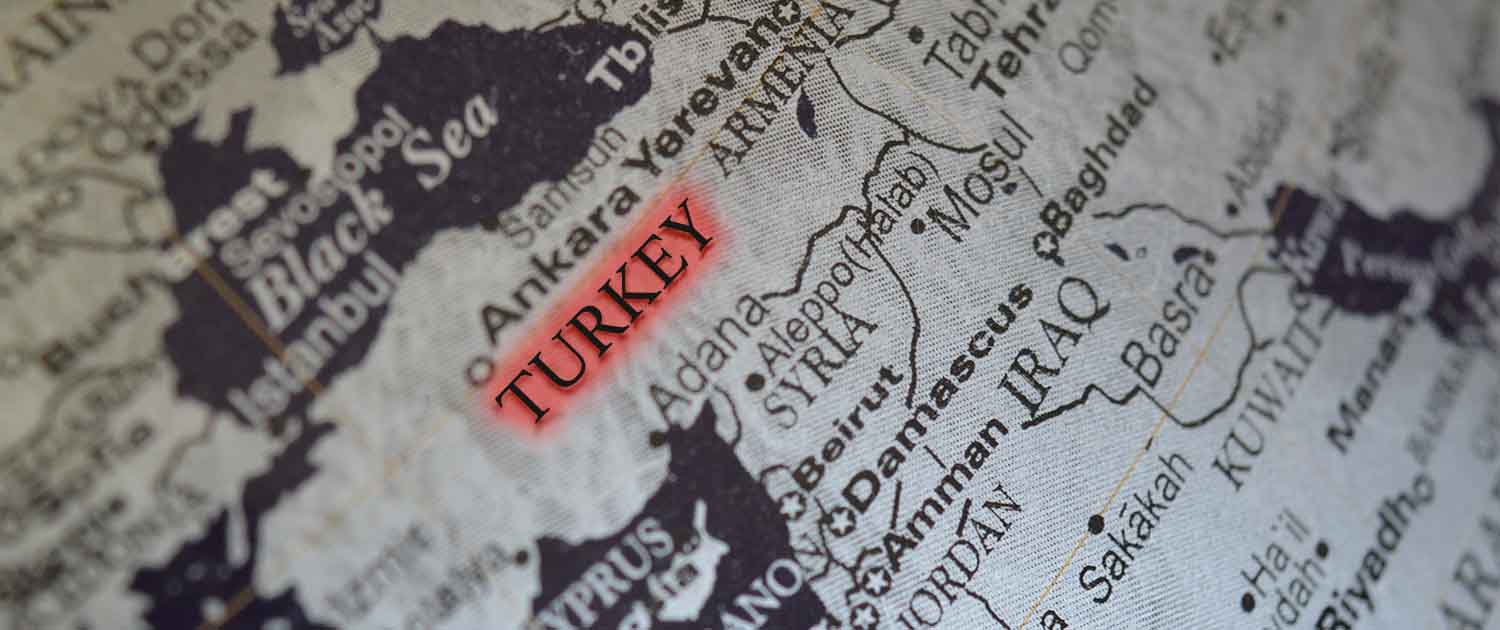- Türkiye has one of the highest levels of overall Internet resilience in Western Asia, although with a noticeably lower level of performance.
- Nearly two-thirds of popular content is served locally in Türkiye, assisted by a large number of data centers and Internet exchanges.
- Learn more about the evolution and resilience of the Internet in Türkiye at the Internet Measurement Day happening in Instanbul on 6 November.
It’s not long now until Internet Measurement Day Türkiye, where I will be participating to speak about Internet Society Pulse and what our data can tell us about the resilience of the Internet in Türkiye and the wider region. RIPE NCC and ICANN co-host the event to promote Internet measurement tools to local communities across the RIPE NCC service region.
Register for Internet Measurement Day Türkiye, Istanbul Marriott Hotel Sisli, 6 November 2024
Our dependence on Internet-based services is growing constantly, but how resilient is the critical infrastructure we all depend on in the presence of deliberate attacks, natural disasters, and accidental misconfigurations? We can explore the Internet Society Pulse Internet Resilience Index to understand the dimensions of Internet resilience and see how Türkiye measures up against other countries and regions.
What is a Resilient Internet?
Firstly let’s define terms. A resilient Internet connection maintains an acceptable level of service in the face of faults and challenges to normal operation. And Internet resilience is big business these days. A recent report found 97% of respondents said a reliable, resilient Internet is of utmost importance to their business success.
The Pulse Internet Resilience Index collates around 30 sets of public data that relate to four pillars of a resilient Internet, namely:
- Infrastructure: The existence and availability of physical infrastructure that provides Internet connectivity.
- Performance: The ability of the network to provide end-users with seamless and reliable access to Internet services.
- Security: The ability of the network to resist intentional or unintentional disruptions through the adoption of security technologies and best practices.
- Market Readiness: The ability of the market to self-regulate and provide affordable prices to end-users by maintaining a diverse and competitive market.
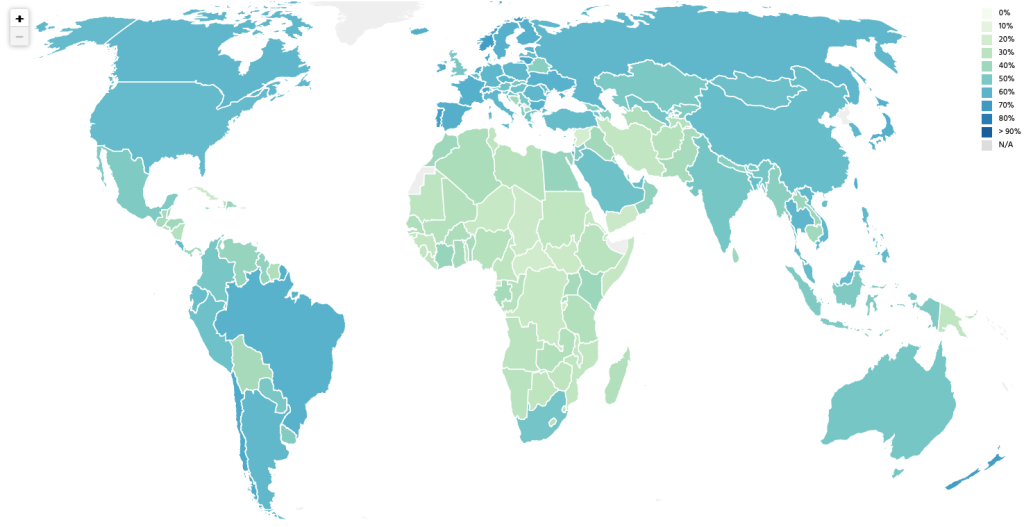
The global picture suggests a pretty strong correlation between a country’s GDP and levels of Internet resilience which is perhaps unsurprising.
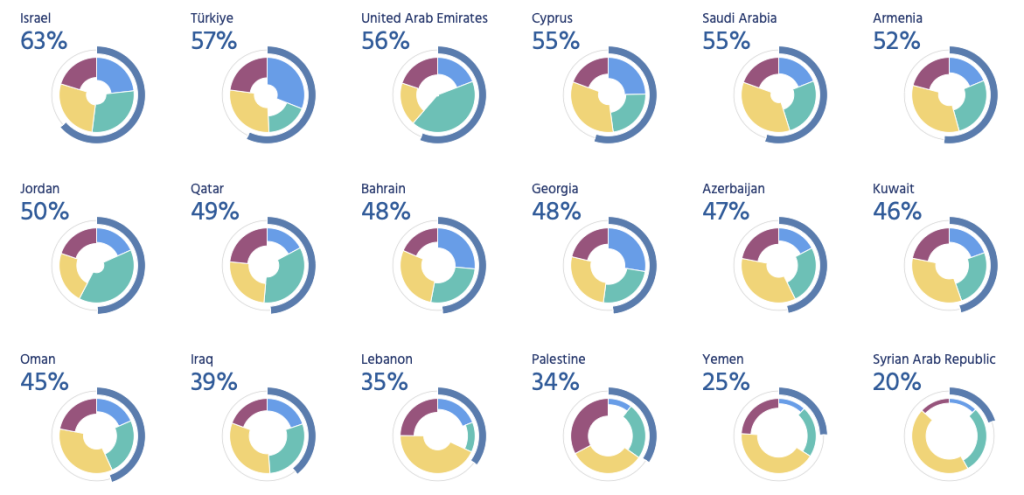
Looking at Western Asia in more detail, we can see that Türkiye (in second place just behind Israel) has one of the highest levels of overall resilience in the region, although with a noticeably lower level of Performance than some lower-ranked neighbors.

Türkiye’ scores most strongly for the Infrastructure pillar, where all indicators are very positive, with the exception of data centers.
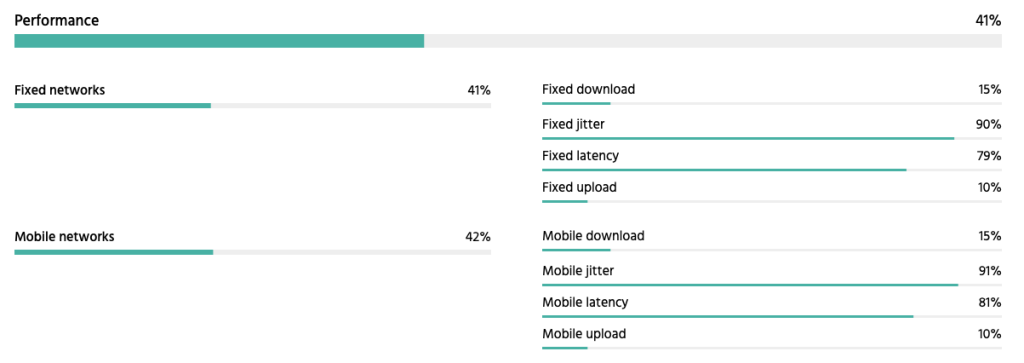
The performance pillar is the weakest of the four, where Türkiye compares unfavorably for both fixed and mobile network upload and download bandwidth performance.
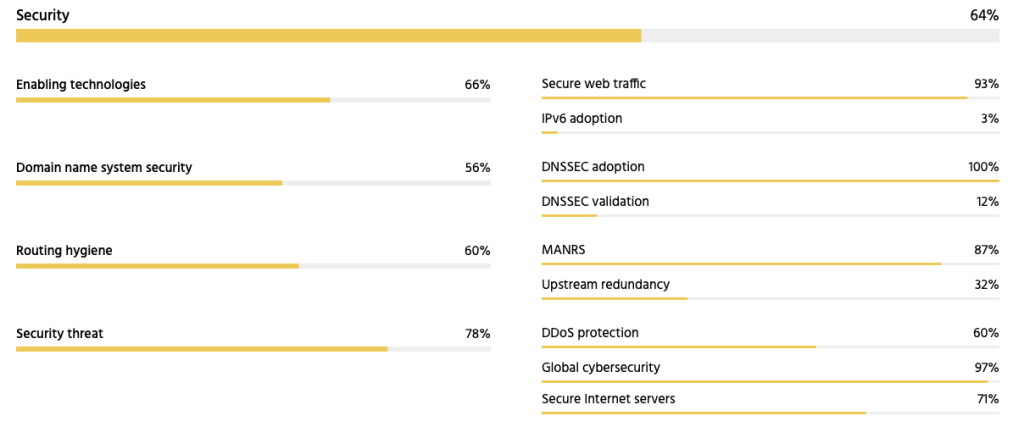
Security is also largely positive although IPv6 adoption is significantly below global trends (see more detail on this point below). The use of Domain Name System Security (DNSSEC) validation is also comparatively low.

Finally, Market Readiness, while largely positive, suffers due to a lack of upstream provider diversity and relatively low levels of peering both of which are reflected in the Pulse Country Report for Türkiye.
Other measures presented in the Pulse Country Report are largely favorable, with the exception of DNSSEC Coverage, Routing Security Adoption, and Internet Freedom; Freedom House finds in its latest Freedom on the Net Report that Türkiye is ‘Not Free’ by its methodology.
The other significant exception that I mentioned earlier is IPv6 adoption. As can be seen from the comparisons with the global top 10 countries for IPv6 deployment, and the countries of the Western Asia region, Türkiye’s level of IPv6 deployment is seriously lacking. IPv6 deployment is crucial for the ongoing growth and sustainability of the global Internet.
Where is Türkiye’s Most Popular Content Hosted?
Finally, a feature recently added to Pulse Country Reports is the Popular Content Locality measurement. This shows that nearly two-thirds of popular content is served locally in Türkiye, which is very positive compared with neighboring countries in Western Asia.
The more detailed picture shown in the diagram below indicates that many large content delivery networks have a presence in Türkiye today.
If you found this post interesting, why not review the Pulse Internet Resilience Index results for your country or region and share them with your local technical community and policymakers for discussion? Also, check out the Pulse Country Report for your country; downloadable PDF files are available for ease of sharing.
Contact the Pulse team if you have feedback or questions. And huge thanks to the folks making Internet datasets openly available — none of this work would be possible without your generous contributions.
Register for Internet Measurement Day Türkiye, Istanbul Marriott Hotel Sisli, 6 November 2024

